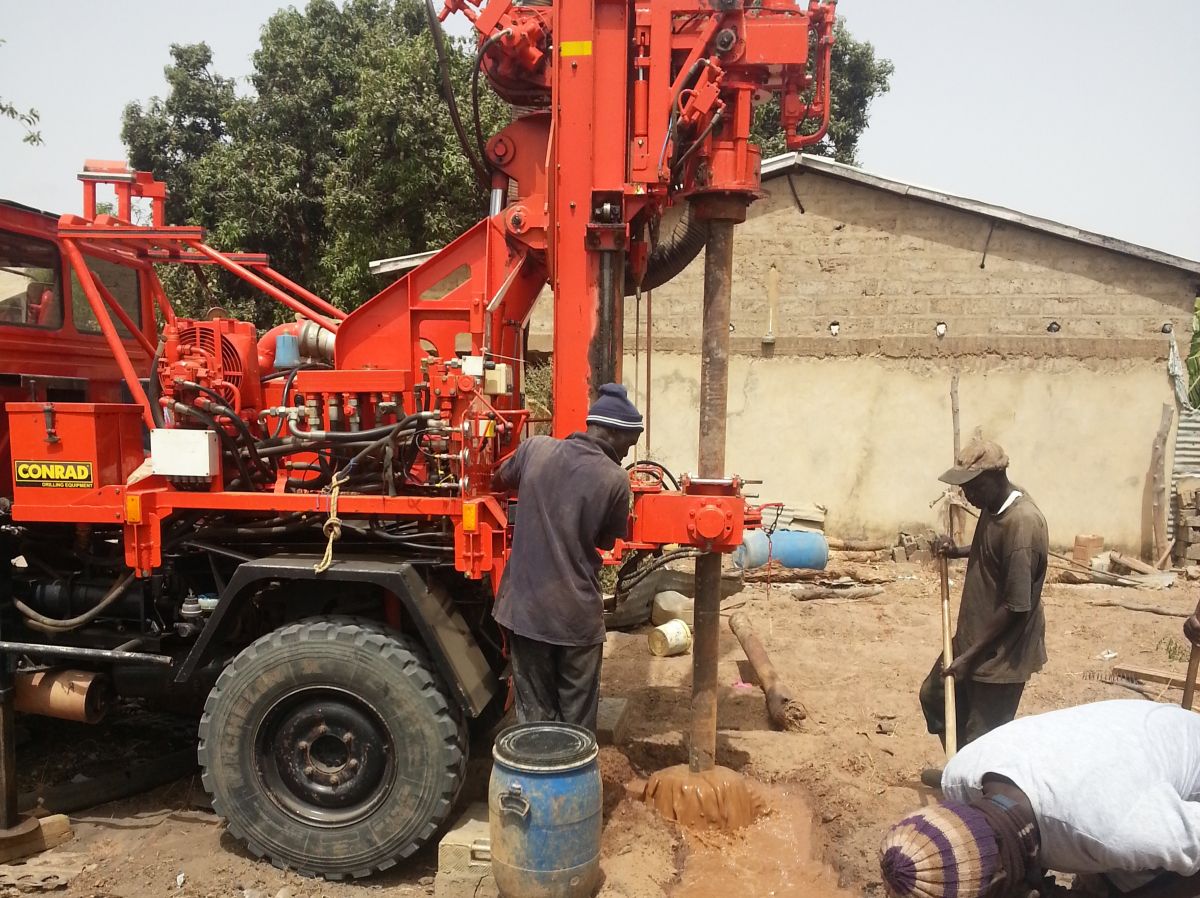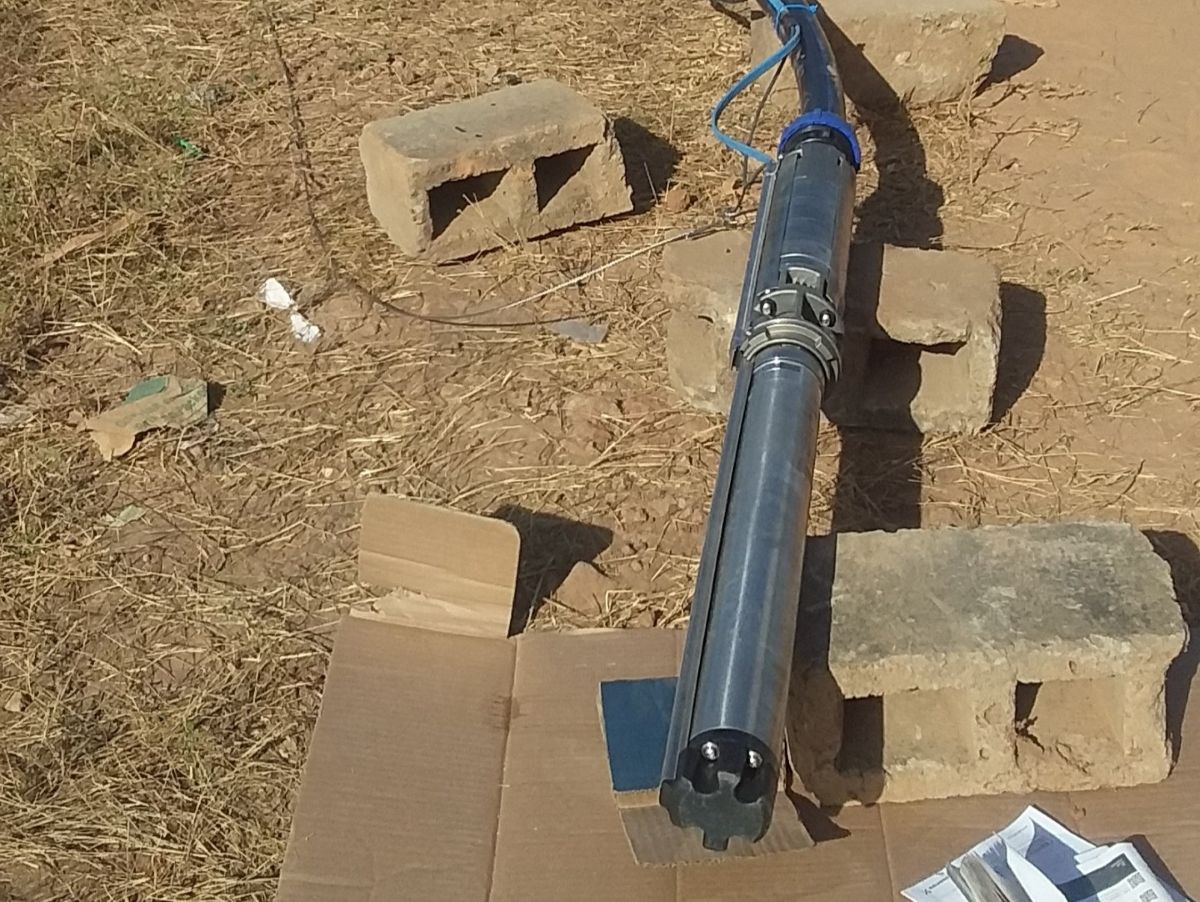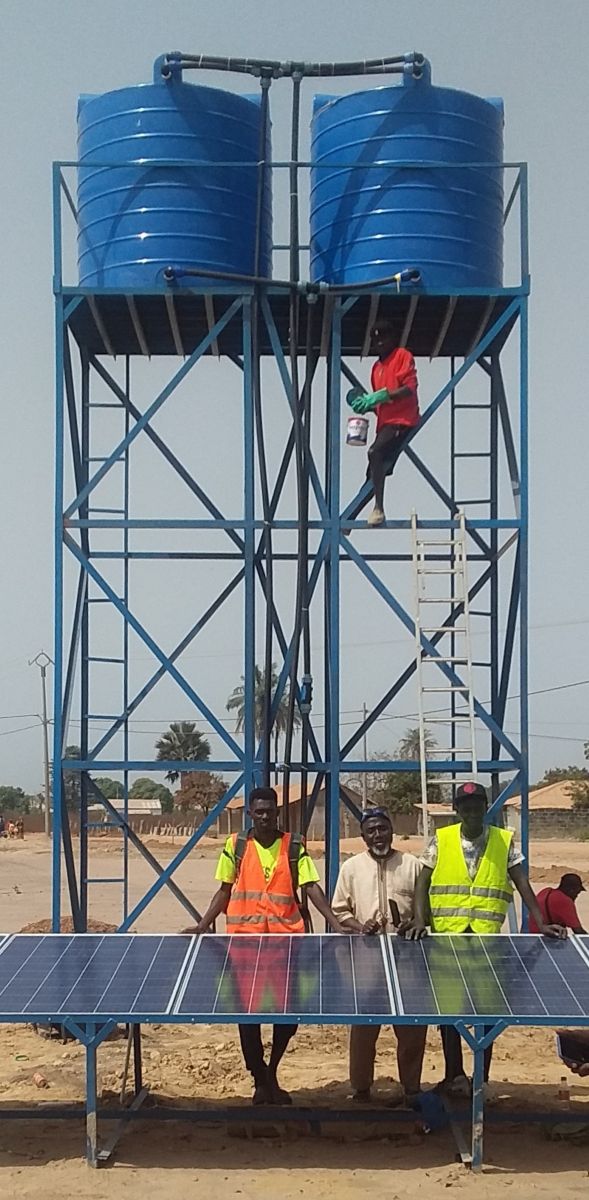Water in rural Gambia
Solar energy pumping installations extract pure water from deeper groundwater layers and distribute the water through the central water storage systems throughout the villages.

Impure drinking water
The Gambia has abundant surface water in the Gambia River. This is rarely used for drinking water due to the poor water quality. In addition, rainfall is very seasonal and there are no rivers inland. This means that the Gambians depend on groundwater for their drinking water.
Traditionally, the Gambian draws from the upper aquifer with hand-dug wells. This water is highly polluted and not drinkable. In addition, such a well is open and unsafe for children and animals.

Pure water from deep water layers
Deeper aquifers are pure. We pump water from the second water layer, which is about 15 to 30 m below the first layer. This water layer is of good quality, is bacteriologically pure and is sufficiently replenished during the rainy season.
To reach the second water layer, we drill a well mechanically. A pipe with a diameter of 12.5 cm is placed in the well. We fill up the space around the well. In this way, the first, polluted water layer does not contaminate the second, pure layer.

Performante grondwaterpomp
A long, narrow water pump is placed in the tube. The water pump is located at the bottom and pushes the water upwards. Depending on the available power and depth, the pump has a flow rate of 1000 to 3000 litres per hour.
The pump works on direct and alternating current and can switch from electricity generated by solar panels to the electricity grid without adjustments.
The pump and the drilling of the pump well are the largest costs of the water installation. We opt to use high-quality materials. This way we are assured of a long lifespan and limit maintenance.
Tower with water tank
A metal tower with two 5,000-litre water tanks is located above the borehole. When the water tanks are full, the water flows back into the well. This way, no water is lost and the water stays fresh.
Filling the water tank with the help of the sun
Five solar panels supply electricity for the pump. As soon as the sun shines, the pump works. After sunset, the pump stops and the water from the water tank can still be used.
Distribution points
A first distribution point is located next to the tower. This is a tap that is fixed in a concrete base. We are pulling pipes for additional distribution points to more remote neighbourhoods. In this way, a village gains access to clean water.
Location
We choose the location of the borehole and the distribution points in consultation with our local employees and the local population. This can be in a remote village or near a school or health centre. The borehole and distribution points are always on communal land. This way, everyone can use the water installation and there is social control.
Maintenance
Local employees maintain installations. Taps are replaced, pipes are repaired.
Realisations
So far, we have installed 36 boreholes with the associated distribution infrastructure. In this way, we provide thousands of people with clean water.
Consequences for the population
The immediate consequences of these projects are a noticeable decrease in the disease and mortality rates, both in children and adults. Thanks to the water, we also see new local initiatives emerging, such as the creation of vegetable gardens.

